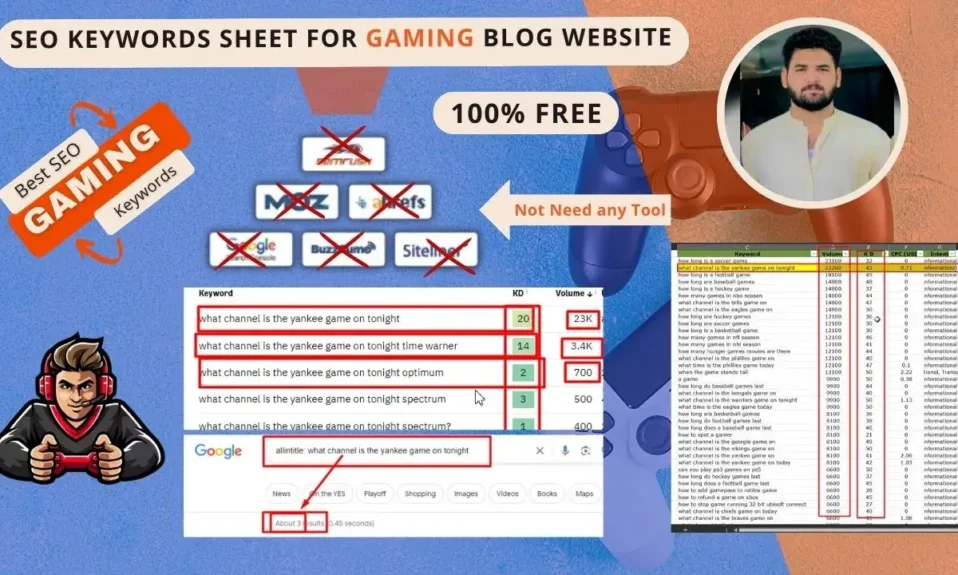
Net efficiency is a vital consider figuring out the success of any web site. Gradual-loading pages, unresponsive interfaces, and different efficiency points can considerably affect consumer expertise, resulting in decreased engagement, greater bounce charges, and misplaced income.
To start out taking again management over your website performance, it is advisable monitor it utilizing the suitable metrics. TTI, which stands for Time To Interactive, is one such metric that tells you the way lengthy it takes in your web page to be absolutely interactive in your customers.
What’s Time To Interactive (TTI)?
Time To Interactive (TTI) is a efficiency metric used to guage how lengthy it takes for a web page to change into absolutely interactive to the consumer.
The interactivity of a web page is measured by 4 standards:
- The browser shows significant content material,
- The web page is able to deal with actions for seen components that the consumer can provoke,
- The web page responds to consumer interactions inside 50 milliseconds, and
- Essentially the most vital scripts in your web page’s code have been executed, leaving the principle thread idle.
It’s important to know that TTI doesn’t simply measure the load time of your web page; it goes past that. TTI focuses on interactivity.
Load time vs. interactivity – what’s the distinction?
Load time and interactivity are completely different however associated facets of internet efficiency. Load time describes the time it takes to load an internet site’s content material. In distinction, interactivity describes the time it takes for an internet site to change into responsive.
It could sound like evaluating two synonyms, however the distinction is sort of important.
Think about getting up early on Monday morning. You awakened with the alarm, yawned, and there was nothing extra to load earlier than beginning your day. It doesn’t imply, nonetheless, that you simply’re prepared for the decision out of your boss. You’re going to want some espresso to change into absolutely responsive.
TTI is a user-centric metric targeted on assessing internet efficiency from the sensible perspective of your potential buyer.
To maintain customers on an internet site, 4 important moments should occur in fast succession throughout web page loading.
- Firstly, the consumer receives a visual sign that the web page is loading.
- Secondly, the loaded content material turns into helpful sufficient to know the web page’s content material.
- Within the third step, the web page turns into interactive.
- Lastly, the web page is absolutely interactive, which means that consumer interactions can happen easily and with out interruptions.
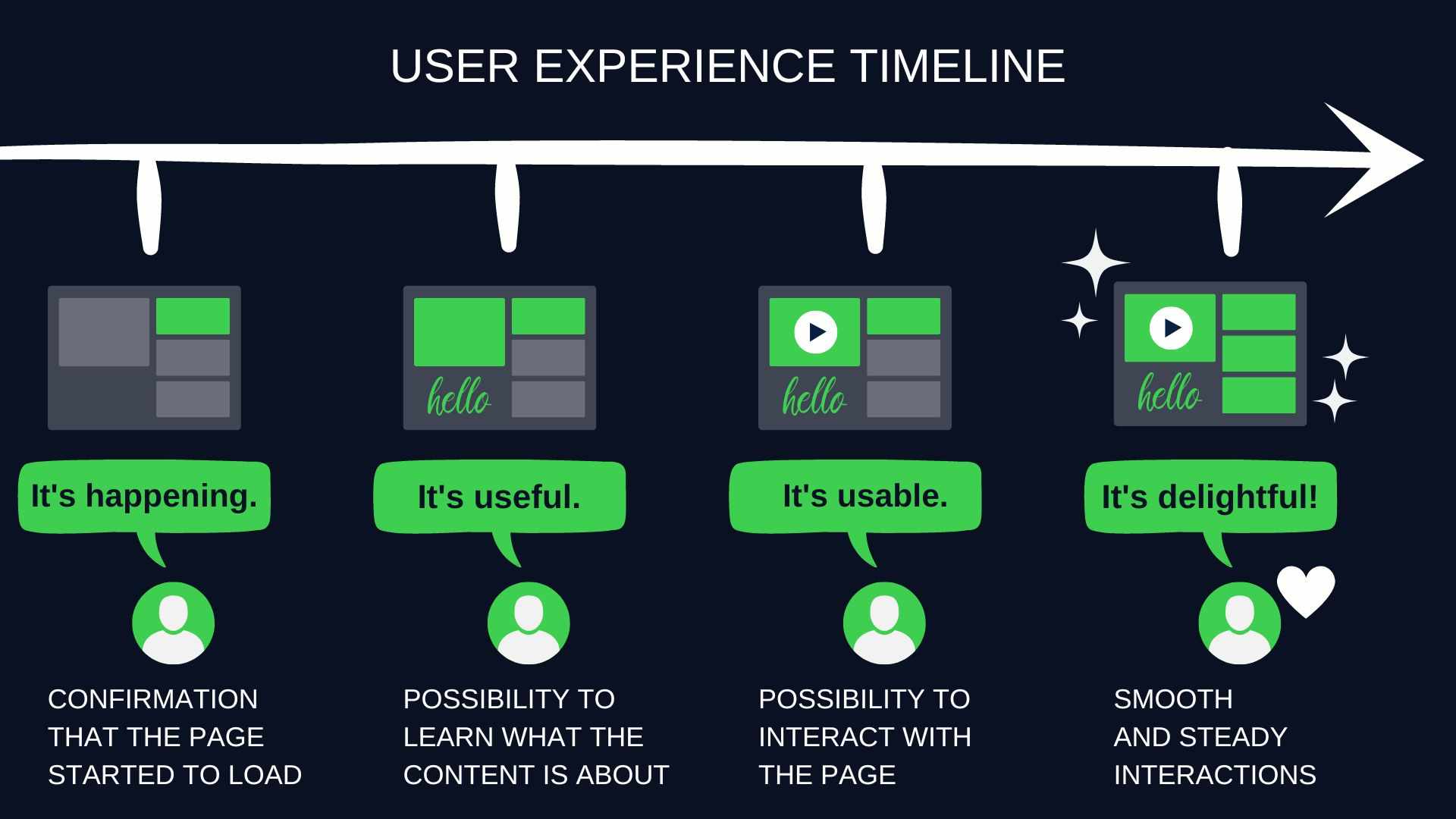
You’ll be able to consider TTI as a approach to examine how lengthy it takes your web site to offer customers with a very satisfying expertise when it comes to perceived velocity. By controlling that point, you’ll be able to decrease your bounce price and depart a very good impression in your customers.
Is TTI a Core Net Vitals Metric?
The brief reply isn’t any. Core Net Vitals are a set of three metrics that measure completely different facets of consumer expertise. Largest Contentful Paint measures perceived load velocity, First Input Delay measures responsiveness, and Cumulative Layout Shift measures visible stability. These three metrics are thought-about important for evaluating an internet site’s consumer expertise.
Different internet important metrics aren’t thought-about “core” however present further details about your web site’s velocity.
TTI will not be a candidate Core Net Vitals metric and should not affect your rankings on Google. Nevertheless it’s nonetheless worthwhile to make use of this metric. A great TTI rating can result in a decrease CLS, and TTI stays a related measure of how customers understand your web site early within the go to.
Learn our articles about different internet efficiency metrics:
How is Time to Interactive calculated?
TTI is measured in seconds, and calculating it in your web page requires figuring out the First Contentful Paint and a primary 5-second quiet window. On this window, the browser shouldn’t course of any duties on the principle thread that take greater than 50 milliseconds and shouldn’t look forward to greater than two server response requests.
TTI is a time limit between FCP and the quiet window which happens simply as the ultimate lengthy job earlier than the quiet window is accomplished.
I do know that it might appear sophisticated, so let me clarify it in less complicated phrases. I’ll begin by defining what FCP is after which present you the way your web page hundreds utilizing a timeline visualization.
Defining the start of your TTI search scope
Calculating the TTI rating begins with defining your FCP.
First Contentful Paint is a metric that designates the primary level within the web page load timeline when the consumer can view something on the display. A swift FCP helps to offer the consumer a way that the web page is loading correctly.
It’s vital to not confuse FCP with LCP (Largest Contentful Paint). LCP is a efficiency metric that determines when the largest aspect on an online web page turns into seen within the consumer’s browser.
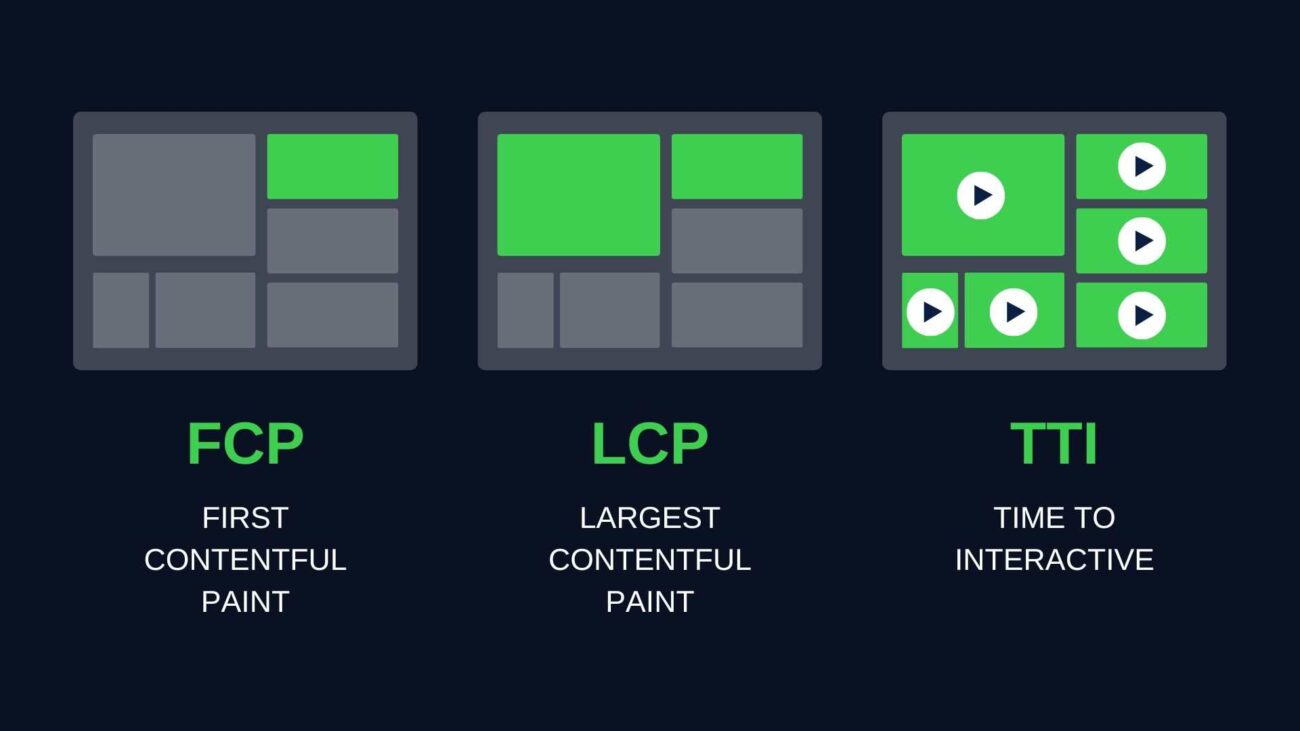
LCP is all the time prepared earlier than your web page is absolutely interactive, but it surely doesn’t have an effect on the calculation of the TTI metric.
Defining the top of your TTI search scope
Think about the timeline of your web page’s loading course of. The consumer browser executes many scripts. A few of these duties take longer than 50 milliseconds and are related for measuring TTI. The browser additionally asynchronously sends useful resource requests to your server, and every of the requests stays “open” till it will get its response.
There’s a second when the browser can take a break that we name a “quiet window.” It’s the first time that, for a minimum of 5 seconds, it doesn’t should carry out any lengthy job on the principle thread, and it has not more than 2 useful resource requests open.
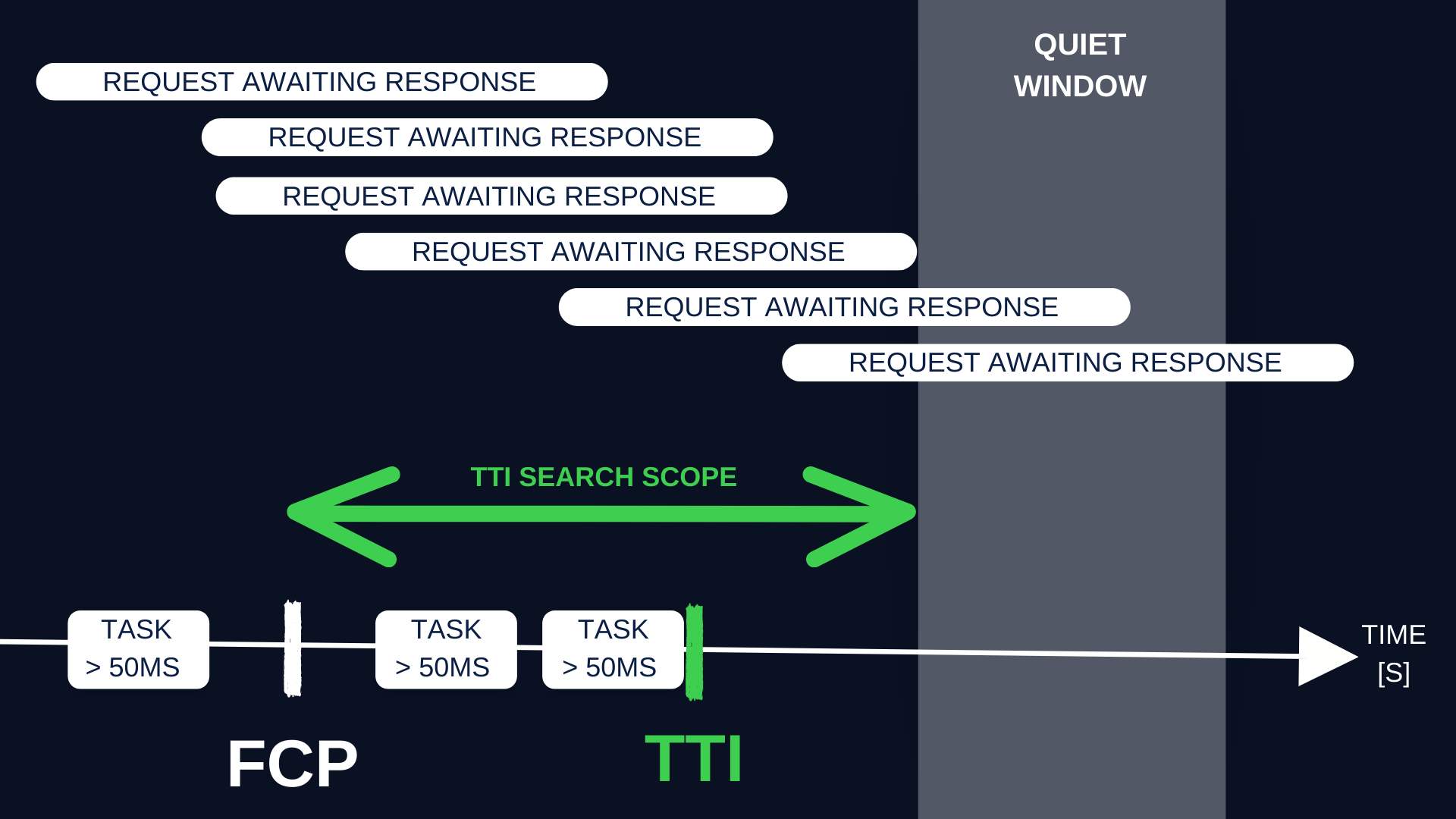
You might be sure that FCP will all the time happen previous to the quiet window. FCP and the graduation of the quiet window outline the timeframe inside which you’ll determine your TTI.
Figuring out the ultimate TTI rating
Focusing simply on that point scope, you must search for a second when the browser finishes the final lengthy job earlier than the quiet window.
If FCP wasn’t adopted by any job longer than 50ms, your TTI equals your FCP.
Time To Interactive vs First Enter Delay
It may be complicated to inform aside the calculation of Time to Interactive and the measurement of First Enter Delay.
Keep in mind that First Enter Delay measures the time it takes for an online web page to answer consumer interplay between First Contentful Paint and Time to Interactive. This manner, it’s completely different from TTI, which measures the time till the web page is absolutely interactive and never how lengthy it takes for the web page to react to a consumer motion.
What is an efficient TTI rating?
Your objective ought to be a Time to Interactive of underneath 5 seconds to make sure a satisfying consumer expertise. This can be a good TTI rating according to Lighthouse.
How you can measure TTI after the Lighthouse change
For a very long time, one of the simplest ways to measure TTI was to run a Lighthouse efficiency audit in your web site.
Nonetheless, at the moment, Google is altering its Lighthouse 10 software by removing TTI and giving its rating weight to CLS (Cumulative Layout Shift). CLS will now account for 25% of the general efficiency rating, and TTI will represent 10% of that quarter.
The different instruments to Lighthouse to measure TTI:
How you can measure TTI with PageSpeed Insights
Google’s PageSpeed Insights retrieves its knowledge from Lighthouse, so it’s doable that we’ll witness related adjustments to its working sooner or later. Nonetheless, as of the writing of this text, measuring TTI utilizing PageSpeed Insights is feasible and extremely simple.
All it takes is copying and pasting the URL tackle of a web page you’re fascinated with testing and clicking “Analyze.”
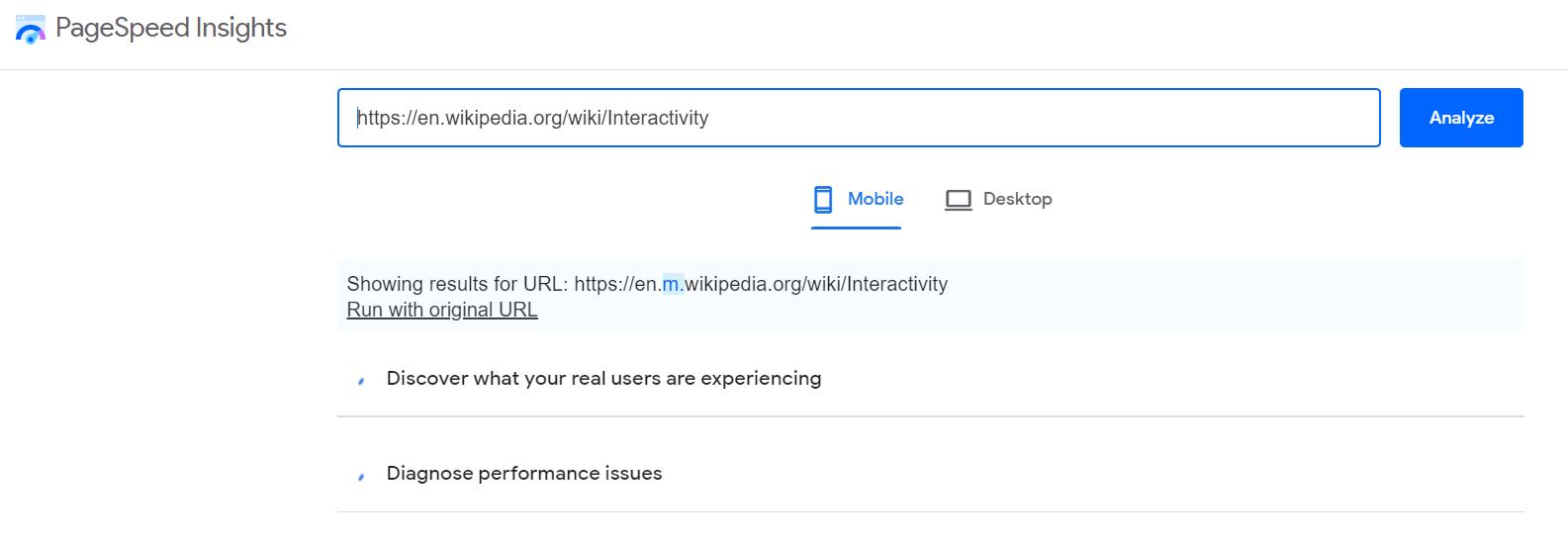
As you’ll be able to see, you’ll be able to evaluate how your web page is doing on cell and desktop gadgets.
Your TTI rating will likely be displayed within the “Diagnose efficiency points” part. You might have to scroll right down to see it after the report is prepared.
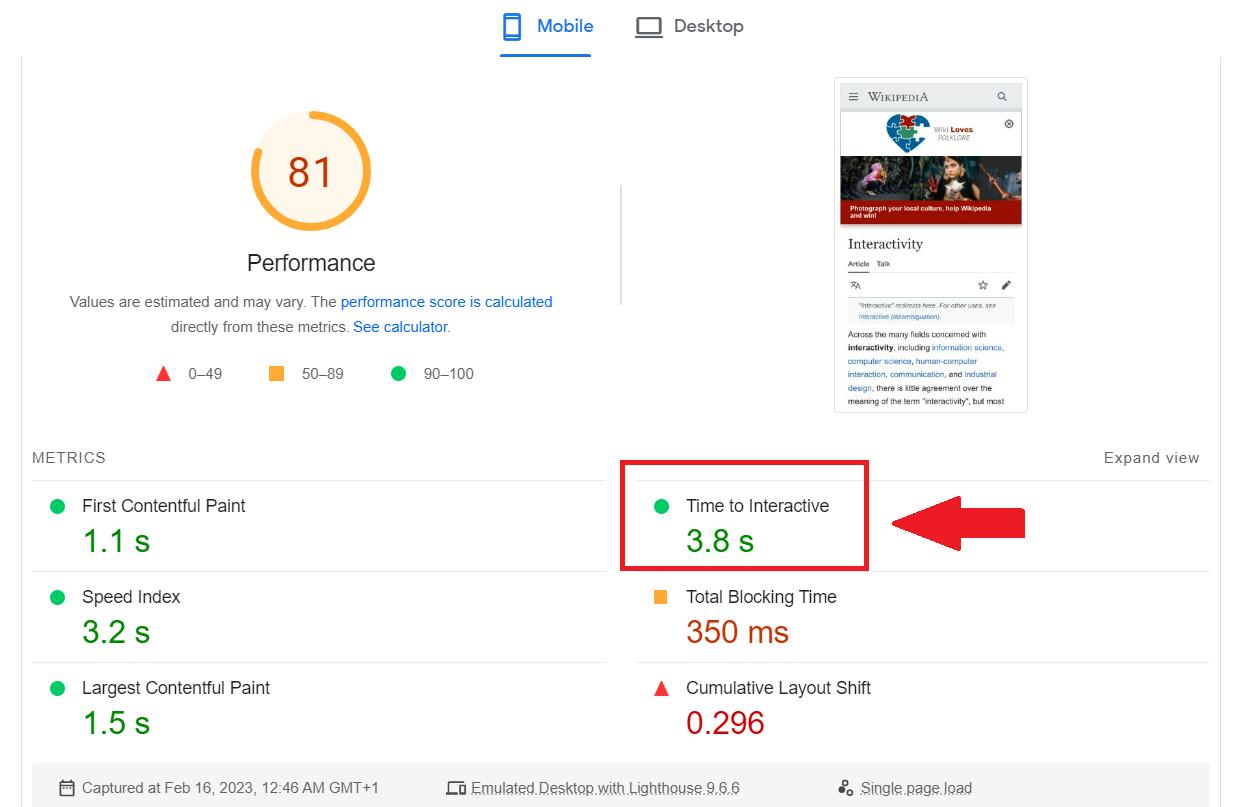
How you can measure TTI with Webpagetest
Go to Webpagetest and enter the URL you need to check.
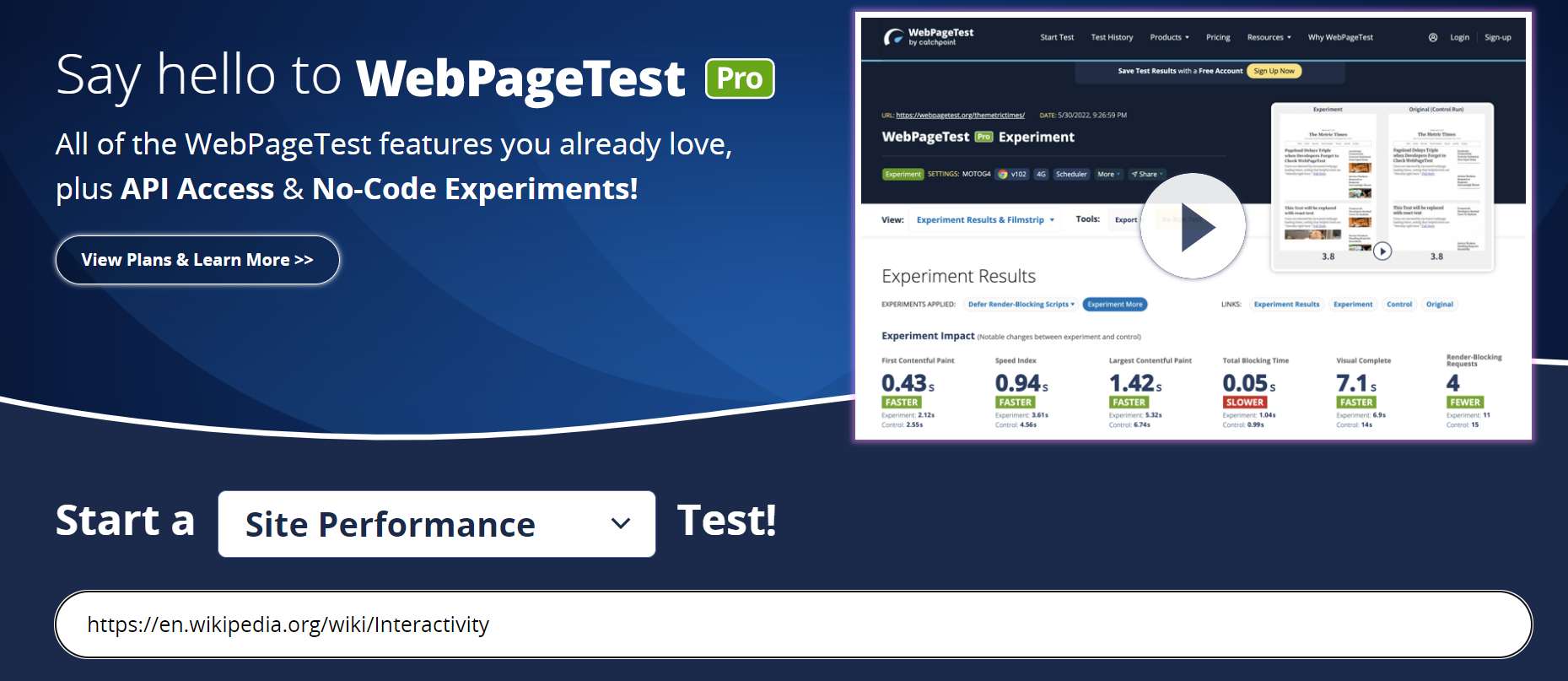
If you wish to see the Time to Interactive (TTI) rating, it is advisable press the “Plot Full Outcomes” button as it’s not proven on the primary outcomes display.
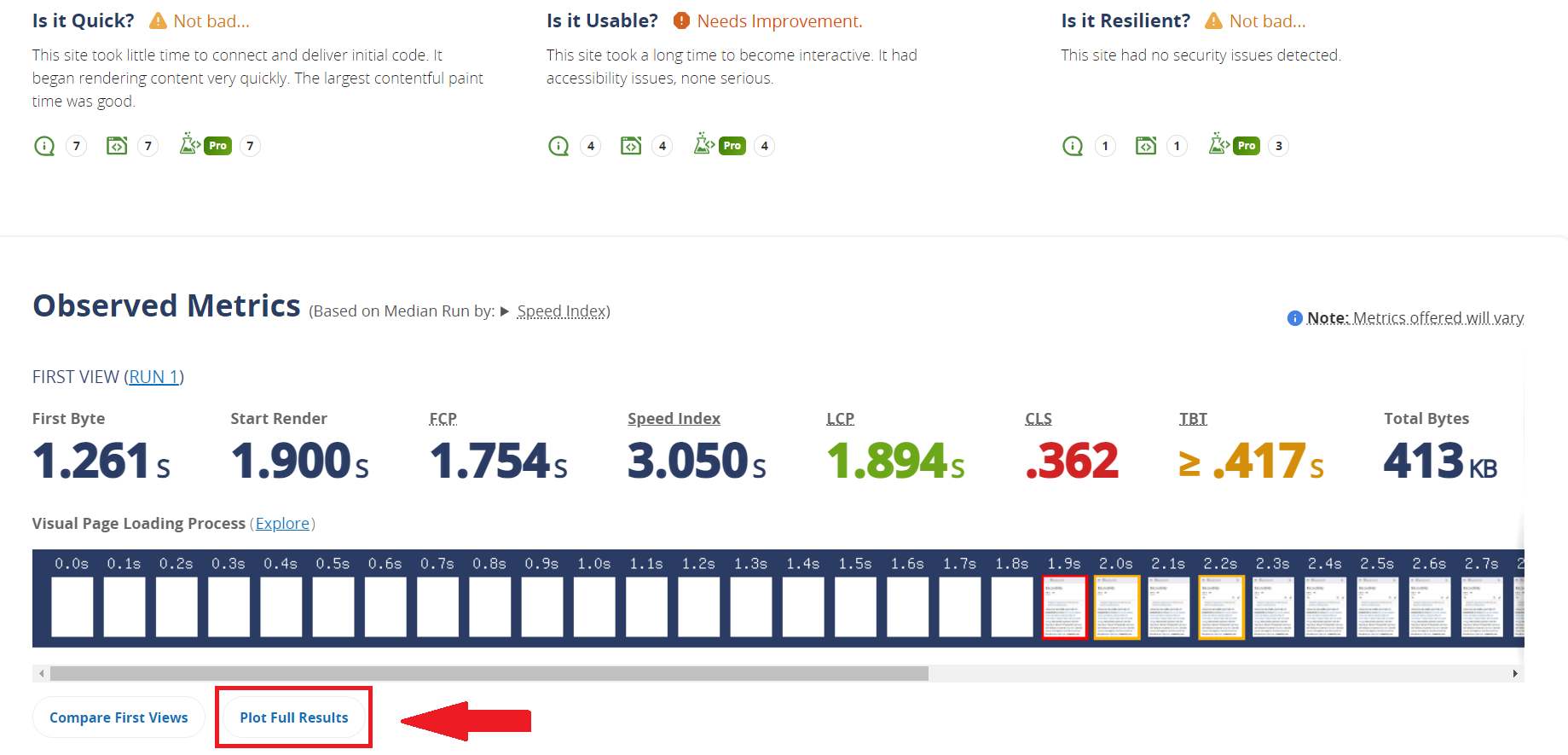
Scroll down to seek out your Time To Interactive stats.
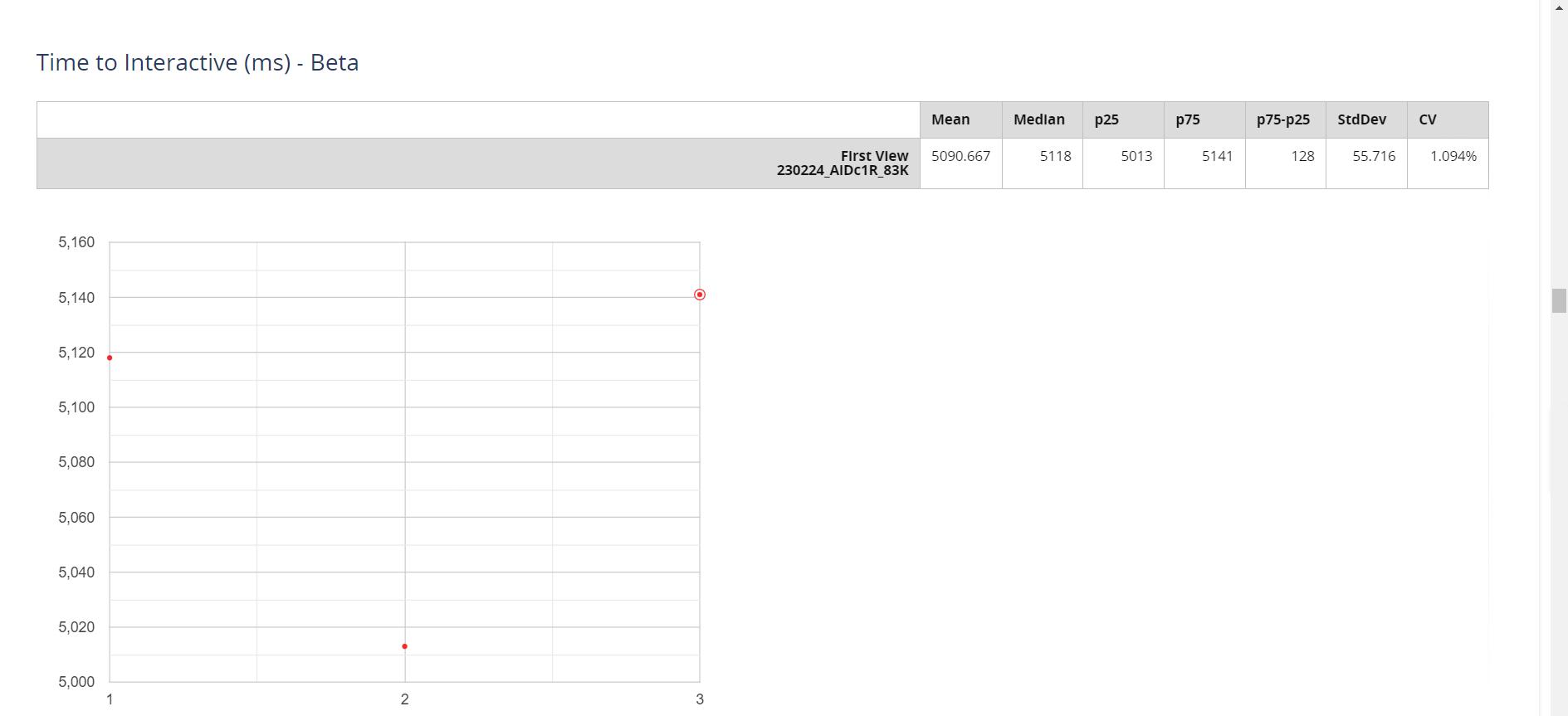
What Causes A Gradual TTI?
Gradual TTI is primarily brought on by the huge quantities of JavaScript used generally utilized by trendy web sites. Lengthy JavaScript duties, these taking greater than 50ms, can delay TTI by taking on a substantial period of time on the principle thread.
Since browsers rely upon the principle thread to finish numerous duties, lengthy duties could make the web page unresponsive till the duty is finished.
How JavaScript Influences TTI?
As quickly as a consumer lands on an internet site, their browser begins downloading and executing JavaScript code. Nonetheless, if this code is unoptimized and leads to lengthy duties, it may trigger delays in TTI.
Lengthy duties stop the browser’s principal thread from finishing up different essential duties, reminiscent of web page rendering or responding to consumer actions.
In website positioning, it’s generally understood that whereas JavaScript can improve an internet site’s visible attraction and interactivity, it may additionally negatively affect internet efficiency. Particularly, when JavaScript code is the render-blocking useful resource, it may considerably decelerate web page loading occasions and create vital processing calls for for browsers.
How you can Enhance Time To Interactive?
To boost your TTI, there are two key elements at play – optimizing JavaScript code and lowering server response time.
How you can optimize JavaScript to enhance TTI
- Evaluation your code to minify unused scripts,
- Compress the biggest information discovered,
- Reasonably than overwhelming browsers by sending all of the JavaScript code in a single file, break up the code and initially ship solely the mandatory code that guests want firstly,
- Delay third-party scripts, reminiscent of social sharing buttons, video participant embeds, iframes for advertisements and so forth., whereas prioritizing scripts that present probably the most worth to the consumer,
- Implement the defer attribute to inform browsers to not look forward to specific scripts, however proceed to course of HTML as a substitute.
How you can scale back server response time for higher TTI
- Ensure you’re utilizing a correct internet hosting service, ideally a devoted one,
- Implement a Content material Supply Community to retailer content material on servers situated in shut proximity to the consumer,
- Incorporate database optimization into your CMS,
- Apply pre-fetching strategies, reminiscent of rendering particular web page components upfront,
- Chorus from utilizing internet fonts that generate further HTTP requests to exterior assets,
- Be certain that you replace your server’s software program regularly.
It may be overwhelming to battle these optimization challenges by yourself, so don’t hesitate to examine Onely’s JavaScript SEO services or be taught extra about web performce services offered by our specialists.
What about TTI in WordPress pages?
You’ll be able to assist your WordPress web site obtain a greater TTI rating by usingplugins. Begin by making an attempt instruments from the next listing:
- Closure Compiler – Google’s software designed to optimize the efficiency of JavaScript by analyzing and compiling code to create a extra environment friendly means of serving JavaScript. It achieves this by eradicating useless code, rewriting and minimizing remaining code, and checking syntax, variable references, and kinds.
- Flying Scripts – a plugin that makes your pages wait with executing JavaScript till there is no such thing as a consumer exercise. It enables you to select which JavaScript scripts ought to be deferred and has a timeout characteristic to run the scripts after a set interval of inactivity.
- Plugin Organizer – a software for WordPress that allows you to management the loading order of your plugins, disable sure plugins based mostly on publish kind or URL, and set up your plugins on the admin web page by grouping them.
- Gonzales – a light-weight plugin that allows the conditional disabling of CSS, JS, and plugins based mostly on the web page being visited. It helps to simplify web site load occasions by eradicating redundant CSS and JS information which may be registered by themes or plugins.
- Rocket CDN – a plugin that makes use of a Content material Supply Community to enhance web site efficiency. It integrates with the Rocket.internet internet hosting platform to offer optimized CDN providers for WordPress web sites.
TL;DR
TTI stands for Time To Interactive. It’s an internet site efficiency metric that measures the time it takes for an internet site to change into absolutely interactive for customers.
As an online web page hundreds, the browser executes scripts and sends useful resource requests to the server. The “quiet window” happens when the browser can take a break for a minimum of 5 seconds with out executing any lengthy duties or having greater than two useful resource requests open. To determine TTI, it is advisable concentrate on the time between FCP and the beginning of the quiet window and observe when the browser finishes the final lengthy job earlier than the quiet window.
Google’s Lighthouse 10 software eliminated TTI and targeted on CLS (Cumulative Structure Shift) as a substitute, however measuring and optimizing your TTI can nonetheless enhance consumer expertise.
To enhance TTI, optimizing JavaScript code and lowering server response time are key. Your objective ought to be attaining a TTI rating underneath 5 seconds.
#Time #Interactive #Efficiency #Metric






